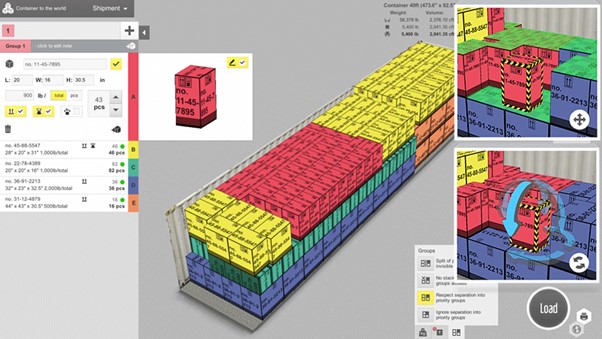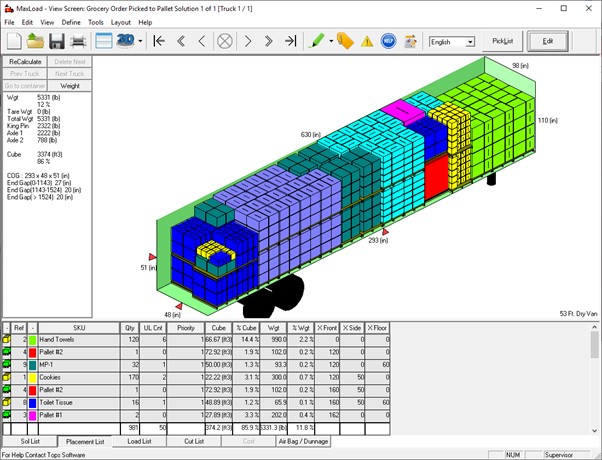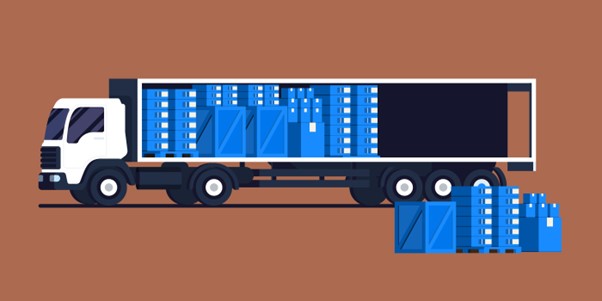
Transportation, inventory control, and warehouse operations are just a few of the many parts of the multidimensional process known as logistics management. The development of technology, especially load planning software, has significantly altered the logistics sector. To increase efficiency, cut costs, and streamline operations, logistics companies now depend on this software.
In this article, we will present a complete guide on load planning software implementation, discuss the top 5 tips for the best logistics using load planning software, why software is needed in logistics, examine the problems it solves, and analyze how it helps to control transportation and carriers. Additionally, we will provide a guide on using load planning software, suggest areas for improvement, and explore the latest trends in logistics for 2023.
Logistics managers will have a better grasp of load planning software by the end of this article, and how it may assist their businesses in keeping up with the ever-changing needs of the logistics industry.
Top 5 Tips for the Best Logistics using the Software
Plan Ahead
Planning effectively is essential to logistics management. A useful tool for resource allocation, shipment management, and route optimization is load planning software. Logistics managers may guarantee on-time deliveries and avoid last-minute catastrophes by making plans in advance.
Optimize Loads
By maximizing the volume of cargo that can be moved in a single trip, load planning software helps to cut down on transportation costs, fuel use, and carbon emissions. Additionally, improving loads makes trips more efficient because the same amount of cargo can be transported in fewer trips.
Track Shipments
Logistics managers may monitor the status of shipments in real-time and make required adjustments to ensure prompt delivery. The information obtained by the software can also be used to update clients on the progress of their deliveries.
Improve Communication
Load planning software can assist you in enhancing communication with drivers, carriers, and clients. Communication is crucial for logistics management. You can communicate with everyone and prevent misunderstandings by using the phone calling, email, and instant messaging tools.
Generate Reports
Reports produced by the program offer useful insights into your logistics operations. To streamline your operations, you can monitor important performance indicators like delivery times, transportation expenses, and resource usage.
The Reason Why the Software is Needed in Logistics

As a dynamic industry, the logistics sector constantly evolves, requiring software to meet its demands. Load planning software is an essential tool for logistics companies seeking to streamline their operations, reduce costs, and boost productivity. Without this software, logistics managers would have to rely on time-consuming and error-prone manual methods. The software automates many logistics management tasks, such as route planning, load optimization, and real-time shipment tracking.
What Problems Does this App Solve?
Numerous problems faced by logistics companies are resolved by the software, including:
Inefficient Route Planning – supports logistics managers in route optimization, thereby decreasing transportation costs and increasing efficiency.
Overloading – helps to prevent overloading of trucks, reducing the risk of accidents and fines.
Poor Communication – improves communication between logistics managers, drivers, carriers, and customers, reducing misunderstandings and delays.
Lack of Data Insights – creates reports that enable data-driven decision-making by providing insightful information about logistical operations.
How it Helps to Control Transportation and Carriers
In order to better manage carriers and transportation, logistics managers could benefit from load planning software. They may keep an eye on shipments in real-time and adapt as needed to ensure prompt deliveries. In addition, it assists with resource allocation, load planning software also lowers transportation costs and boosts productivity. The program lessens the effort for logistics managers, allowing them to concentrate on strategic planning and decision-making by automating many of the duties associated with logistics management.
Does it Help with Reports?
The creation of thorough reports that provide useful insights into logistical operations is one of its primary aspects. These reports offer managers data-driven decision-making support by monitoring crucial performance parameters including delivery times, transportation costs, and resource utilization. Logistics managers can use this data to identify areas that need to be improved and make the required changes to improve their operation. In order to increase transparency and accountability, logistics managers can also share these data with other interested parties, including clients, carriers, and suppliers, through load planning software.
What You Need to Keep in Mind When Using This Software
Despite the fact that load planning software can significantly enhance logistics management, there are a few considerations to make. First and foremost, it’s crucial to pick the appropriate program for your unique requirements. To ensure smooth operations, the software must also be connected with your current systems. Third, the program must be simple to use so that logistics managers may utilize it without receiving essential training. And last, in order to maintain optimal performance and take advantage of the most recent technological breakthroughs, load planning software needs to be updated on a regular basis.
Guide on Using Load Planning Software
Its usage involves a few simple steps:
- Input shipment details such as weight, dimensions, and destination.
- The software will analyze the data and suggest an optimized route and load for the shipment.
- Confirm the suggested route and load, and the software will generate all necessary documentation and labels.
- Monitor the progress of the shipment in real-time using the software’s tracking features.
- Analyze the reports generated by the software to identify areas for improvement.
What Can be Improved for a Better Result
Although load planning software is a useful tool, it can always be enhanced. The incorporation of machine learning and artificial intelligence to give even more precise route planning and load optimization is one area that might be enhanced. The application of blockchain technology to logistics operations to increase transparency and security is another area for development. More sophisticated analytics tools could be included into load planning software to provide even deeper insights into logistical operations.
Trends in Logistics in 2023
There are a few ideas to watch in 2023 as the logistics industry develops further. One of the major trends is the expanding use of automation and robotics in logistics operations, including the employment of robots, drones, and autonomous vehicles for the transportation and handling of freight. Utilizing data analytics and artificial intelligence to enhance decision-making and optimize logistics operations is another trend. Additionally, there is a growing trend in logistics operations towards sustainability and eco-friendliness as businesses look to lower their carbon footprint and implement greener practices. Finally, organizations are putting more of an emphasis on client-centric logistics, trying to offer customized and practical delivery alternatives to match customer requests.
Conclusion

For logistics organizations looking to increase efficiency, cut costs, and optimize operations, load planning software has emerged as a crucial tool. The top 5 logistics principles can help managers make the most of this software’s features. Load planning software has the ability to transform the logistics industry and stay up with the most recent trends and technical developments, however there is always space for improvement.

Taylor is a freelance SEO copywriter and blogger. His areas of expertise include technology, pop culture, and marketing.











